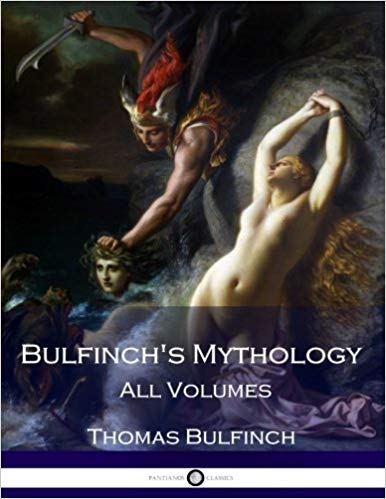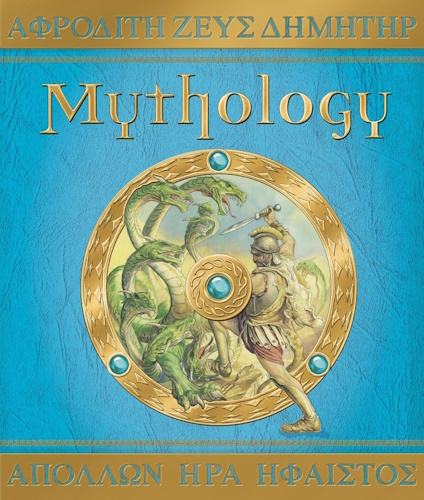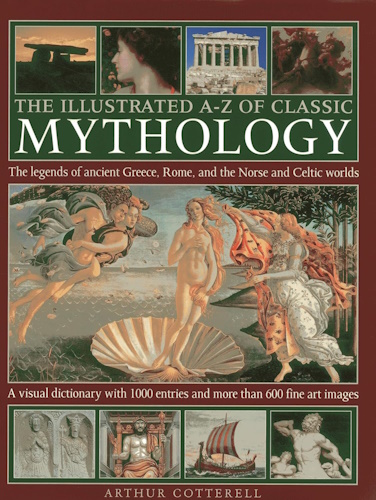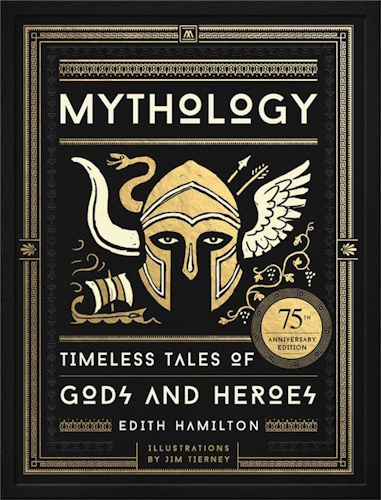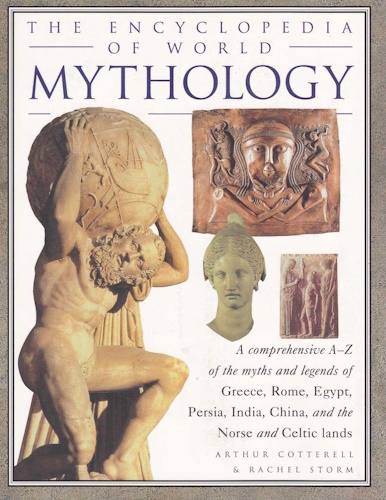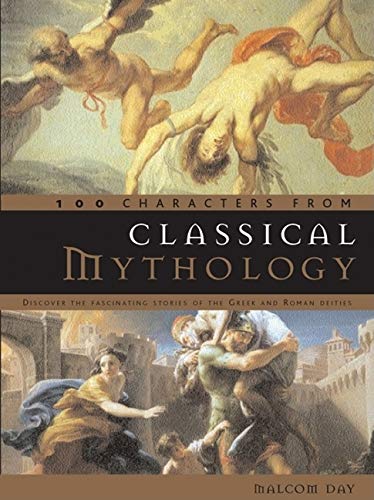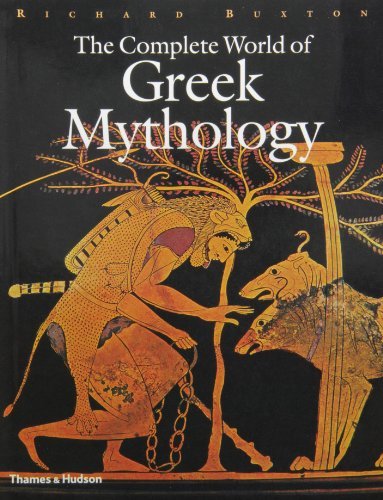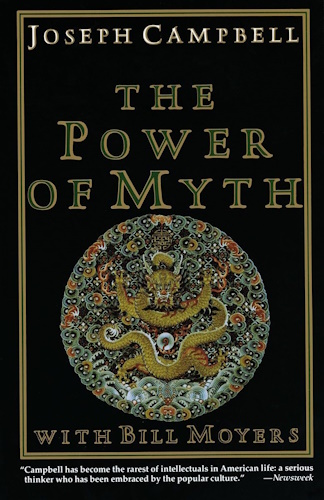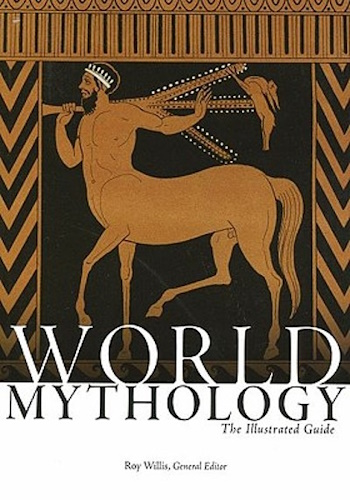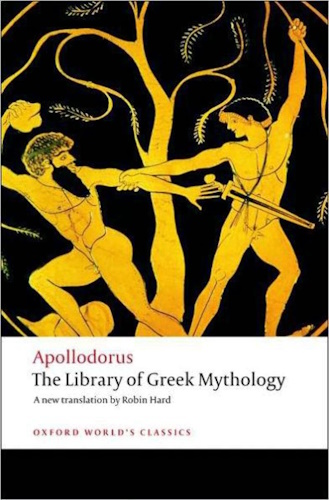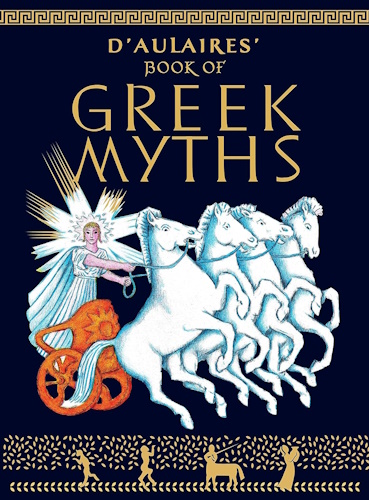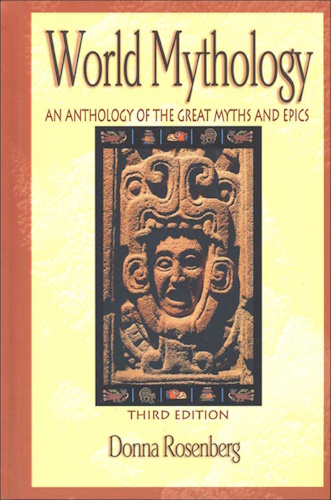
![]()
![]()
CHAPTER XVI.
MONSTERS.
GIANTS, SPHINX, PEGASUS, AND CHIMAERA, CENTAURS, GRIFFIN,
AND PYGMIES.
MONSTERS, in the language of mythology, were beings of unnatural proportions or parts, usually regarded with terror, as possessing immense strength and ferocity, which they employed for the injury and annoyance of men. Some of them were supposed to combine the members of different animals; such were the Sphinx and Chimaera and to these all the terrible qualities of wild beasts were attributed, together with human sagacity and faculties. Others, as the giants, differed from men chiefly in their size; and in this particular we must recognize a wide distinction among them. The human giants, if so they may be called, such as the Cyclops, Antaeus, Orion, and others, must be supposed not to be altogether disproportioned to human beings, for they mingled in love and strife with them. But the super-human giants, who warred with the gods, were of vastly larger dimensions. Tityus, we are told, when stretched on the plain, covered nine acres, and Enceladus required the whole of Mount AEtna to be laid upon him to keep him down.
We have already spoken of the war which the giants waged against the gods, and of its result. While this war lasted the giants proved a formidable enemy. Some of them, like Briareus, had a hundred arms; others, like Typhon, breathed out fire. At one time they put the gods to such fear that they fled into Egypt and hid themselves under various forms. Jupiter took the form of a ram, whence he was afterwards worshipped in Egypt as the god Ammon, with curved horns. Apollo became a crow, Bacchus a goat, Diana a cat, Juno a cow, Venus a fish, Mercury a bird. At another time the giants attempted to climb up into heaven, and for that purpose took up the mountain Ossa and piled it on Pelion.* They were at last subdued by thunderbolts, which Minerva invented, and taught Vulcan and his Cyclops to make for Jupiter.
* See Proverbial Expressions, no. 5.
THE SPHINX.
Laius, king of Thebes, was warned by an oracle that there was danger to his throne and life if his new-born son should be suffered to grow up. He therefore committed the child to the care of a herdsman with orders to destroy him; but the herdsman, moved with pity, yet not daring entirely to disobey, tied up the child by the feet and left him hanging to the branch of a tree. In this condition the infant was found by a peasant, who carried him to his master and mistress, by whom he was adopted and called OEdipus, or Swollen-foot.
Many years afterwards Laius being on his way to Delphi, accompanied only by one attendant, met in a narrow road a young man also driving in a chariot. On his refusal to leave the way at their command the attendant killed one of his horses, and the stranger, filled with rage, slew both Laius and his attendant. The young man was OEdipus who thus unknowingly became the slayer of his own father.
Shortly after this event the city of Thebes was afflicted with a monster which infested the highroad. It was called the Sphinx. It had the body of a lion and the upper part of a woman. It lay crouched on the top of a rock, and arrested all travellers who came that way, proposing to them a riddle, with the condition that those who could solve it should pass safe, but those who failed should be killed. Not one had yet succeeded in solving it, and all had been slain. OEdipus was not daunted by these alarming accounts, but boldly advanced to the trial. The Sphinx asked him, "What animal is that which in the morning goes on feet, at noon on two, and in the evening upon three?" Oedipus replied, "Man, who in childhood creeps on hands and knees, in manhood walks erect, and in old age with the aid of a staff." The Sphinx was so mortified at the solving of her riddle that she cast herself down from the rock and perished.
The gratitude of the people for their deliverance was so great that they made OEdipus their king, giving him in marriage their queen Jocasta. OEdipus, ignorant of his parentage, had already become the slayer of his father; in marrying the queen he became the husband of his mother. These horrors remained undiscovered, till at length Thebes was afflicted with famine and pestilence, and the oracle being consulted, the double crime of Oedipus came to light. Jocasta put an end to her own life, and Oedipus, seized with madness, tore out his eyes and wandered away from Thebes, dreaded and abandoned by all except his daughters, who faithfully adhered to him, till after a tedious period of miserable wandering he found the termination of his wretched life.
PEGASUS AND THE CHIMAERA.
When Perseus cut off Medusa's head, the blood sinking into the earth produced the winged horse Pegasus. Minerva caught and tamed him and presented him to the Muses. The fountain Hippocrene, on the Muse's mountain Helicon, was opened by a kick from his hoof.
The Chimaera was a fearful monster, breathing fire. The fore part of its body was a compound of the lion and the goat, and the hind part a dragon's. It made great havoc in Lycia, so that the king, Iobates, sought for some hero to destroy it. At that time there arrived at his court a gallant young warrior, whose name was Bellerophon. He brought letters from Proetus, the son-in-law of Iobates, recommending Bellerophon in the warmest terms as an unconquerable hero, but added at the close a request to his father-in-law to put him to death. The reason was that Proetus was jealous of him, suspecting that his wife Antea looked with too much admiration on the young warrior. From this instance of Bellerophon being unconsciously the bearer of his own death warrant, the expression "Bellerophontic letters" arose, to describe any species of communication which a person is made the bearer of, containing matter prejudicial to himself.
Iobates, on perusing the letters, was puzzled what to do, not willing to violate the claims of hospitality, yet wishing to oblige his son-in-law. A lucky thought occurred to him, to send Bellerophon to combat with the Chimaera. Bellerophon accepted the proposal, but before proceeding to the combat consulted the soothsayer Polyidus, who advised him to procure if possible the horse Pegasus for the conflict. For this purpose he directed him to pass the night in the temple of Minerva. He did so, and as he slept Minerva came to him and gave him a golden bridle. When he awoke the bridle remained in his hand. Minerva also showed him Pegasus drinking at the well of Pirene, and at sight of the bridle the winged steed came willingly and suffered himself to be taken. Bellerophon mounted him, rose with him into the air, soon found the Chimaera, and gained an easy victory over the monster.
After the conquest of the Chimaera Bellerophon was exposed to further trials and labours by his unfriendly host, but by the aid of Pegasus he triumphed in them all, till at length Iobates, seeing that the hero was a special favourite of the gods, gave him his daughter in marriage and made him his successor on the throne. At last Bellerophon by his pride and presumption drew upon himself the anger of the gods; it is said he even attempted to fly up into heaven on his winged steed, but Jupiter sent a gadfly which stung Pegasus and made him throw his rider, who became lame and blind in consequence. After this Bellerophon wandered lonely through the Aleian field, avoiding the paths of men, and died miserably.
Milton alludes to Bellerophon in the beginning of the seventh book of "Paradise Lost":
"Descend from Heaven, Urania, by that nameIf rightly thou art called, whose voice divine
Following, above the Olympian hill I soar,
Above the flight of Pegasean wing.
Upled by thee,
Into the Heaven of Heavens I have presumed,
An earthly guest, and drawn empyreal air
(Thy tempering); with like safety guided down
Return me to my native element;
Lest, from this flying steed unreined (as once
Bellerophon, though from a lower clime),
Dismounted, on the Aleian field I fall,
Erroneous there to wander and forlorn."
Young, in his "Night Thoughts," speaking of the sceptic, says:
"He whose blind thought futurity denies,Unconscious bears, Bellerophon, like thee
His own indictment; he condemns himself.
Who reads his bosom reads immortal life,
Or nature there, imposing on her sons,
Has written fables; man was made a lie."
Vol. II., p. 12.
Pegasus, being the horse of the Muses, has always been at the service of the poets. Schiller tells a pretty story of his having been sold by a needy poet and put to the cart and the plough. He was not fit for such service, and his clownish master could make nothing of him. But a youth stepped forth and asked leave to try him. As soon as he was seated on his back the horse, which had appeared at first vicious, and afterwards spirit-broken, rose kingly, a spirit, a god, unfolded the splendour of his wings, and soared towards heaven. Our own poet Longfellow also records adventure of this famous steed in his "Pegasus in Pound."
Shakespeare alludes to Pegasus in "Henry IV.," where Vernon describes Prince Henry:
"I saw young Harry, with his beaver on,His cuishes on this thighs, gallantly armed,
Rise from the ground like feathered Mercury,
And vaulted with such ease into his seat,
As if an angel dropped down from the clouds,
To turn and wind a fiery Pegasus,
And witch the world with noble horsemanship."
THE CENTAURS.
These monsters were represented as men from the head to the loins, while the remainder of the body was that of a horse. The ancients were too fond of a horse to consider the union of his nature with man's as forming a very degraded compound, and accordingly the Centaur is the only one of the fancied monsters of antiquity to which any good traits are assigned. The Centaurs were admitted to the companionship of man, and at the marriage of Pirithous with Hippodamia they were among the guests. At the feast Eurytion, one of the Centaurs, becoming intoxicated with the wine, attempted to offer violence to the bride; the other Centaurs followed his example, and a dreadful conflict arose in which several of them were slain. This is the celebrated battle of the Lapithae and Centaurs, a favourite subject with the sculptors and poets of antiquity.
But not all the Centaurs were like the rude guests of Pirithous. Chiron was instructed by Apollo and Diana, and was renowned for his skill in hunting, medicine, music, and the art of prophecy. The most distinguished heroes of Grecian story were his pupils. Among the rest the infant AEsculapius was intrusted to his charge by Apollo, his father. When the sage returned to his home bearing the infant, his daughter Ocyrhoe came forth to meet him, and at sight of the child burst forth into a prophetic strain (for she was a prophetess), foretelling the glory that he was to achieve. AEsculapius when grown up became a renowned physician, and even in one instance succeeded in restoring the dead to life. Pluto resented this, and Jupiter, at his request, struck the bold physician with lightning, and killed him, but after his death received him into the number of the gods.
Chiron was the wisest and justest of all the Centaurs, and at his death Jupiter placed him among the stars as the constellation Sagittarius.
THE PYGMIES
The Pygmies were a nation of dwarfs, so called from a Greek word which means the cubit or measure of about thirteen inches, which was said to be the height of these people. They lived near the sources of the Nile, or according to others, in India. Homer tells us that the cranes used to migrate every winter to the Pygmies' country, and their appearance was the signal of bloody warfare to the puny inhabitants, who had to take up arms to defend their cornfields against the rapacious strangers. The Pygmies and their enemies the Cranes form the subject of several works of art.
Later writers tell of an army of Pygmies which finding Hercules asleep, made preparations to attack him, as if they were about to attack a city. But the hero, awaking, laughed at the little warriors, wrapped some of them up in his lion's skin, and carried them to Eurystheus.
Milton uses the Pygmies for a simile, "Paradise Lost," Book I.:
"...like that Pygmaean raceBeyond the Indian mount, of fairy elves
Whose midnight revels by a forest side,
Or fountain, some belated peasant sees
(Or dreams he sees), while overhead the moon
Sits arbitress, and nearer to the earth
Wheels her pale course; they on their mirth and dance
Intent, with jocund music charm his ear.
At once with joy and fear his heart rebounds."
THE GRIFFIN, OR GRYPHON.
The Griffin is a monster with the body of a lion, the head and wings of an eagle, and back covered with feathers. Like birds it builds its nest, and instead of an egg lays an agate therein. It has long claws and talons of such a size that the people of that country make them into drinking-cups. India was assigned as the native country of the Griffins. They found gold in the mountains and built their nests of it, for which reason their nests were very tempting to the hunters, and they were forced to keep vigilant guard over them. Their instinct led them to know where buried treasures lay, and they did their best to keep plunderers at a distance. The Arimaspians, among whom the Griffins flourished, were a one-eyed people of Scythia.
Milton borrows a simile from the Griffins, "Paradise Lose," Book II.:
"As when a Gryphon through the wildernessWith winged course, o'er hill and moory dale,
Pursues the Arimaspian, who by stealth
Had from his wakeful custody purloined
The guarded gold," etc.
-
Urantia Book, 44:0.11 - The Celestial Artisans
Never in your long ascendancy will you lose the power to recognize your associates of former existences. Always, as you ascend inward in the scale of life, will you retain the ability to recognize and fraternize with the fellow beings of your previous and lower levels of experience. Each new translation or resurrection will add one more group of spirit beings to your vision range without in the least depriving you of the ability to recognize your friends and fellows of former estates.
-
Princess Bride 1987 Wallace Shawn (Vizzini) and Mandy Patinkin (Inigo Montoya)
Vizzini: HE DIDN'T FALL? INCONCEIVABLE.
Inigo Montoya: You keep using that word. I do not think it means what you think it means. -
Urantia Book, 117:4.14 - The Finite God
And here is mystery: The more closely man approaches God through love, the greater the reality -- actuality -- of that man. The more man withdraws from God, the more nearly he approaches nonreality -- cessation of existence. When man consecrates his will to the doing of the Father's will, when man gives God all that he has, then does God make that man more than he is.
-
Urantia Book, 167:7.4 - The Talk About Angels
"And do you not remember that I said to you once before that, if you had your spiritual eyes anointed, you would then see the heavens opened and behold the angels of God ascending and descending? It is by the ministry of the angels that one world may be kept in touch with other worlds, for have I not repeatedly told you that I have other sheep not of this fold?"
-
Urantia Book, Foreword - 0:12.12 - The Trinities
But we know that there dwells within the human mind a fragment of God, and that there sojourns with the human soul the Spirit of Truth; and we further know that these spirit forces conspire to enable material man to grasp the reality of spiritual values and to comprehend the philosophy of universe meanings. But even more certainly we know that these spirits of the Divine Presence are able to assist man in the spiritual appropriation of all truth contributory to the enhancement of the ever-progressing reality of personal religious experience—God-consciousness.
-
Urantia Book, 1:4.3 - The Mystery Of God
When you are through down here, when your course has been run in temporary form on earth, when your trial trip in the flesh is finished, when the dust that composes the mortal tabernacle "returns to the earth whence it came"; then, it is revealed, the indwelling "Spirit shall return to God who gave it." There sojourns within each moral being of this planet a fragment of God, a part and parcel of divinity. It is not yet yours by right of possession, but it is designedly intended to be one with you if you survive the mortal existence.
-
Urantia Book, 1:4.1 - The Mystery Of God
And the greatest of all the unfathomable mysteries of God is the phenomenon of the divine indwelling of mortal minds. The manner in which the Universal Father sojourns with the creatures of time is the most profound of all universe mysteries; the divine presence in the mind of man is the mystery of mysteries.
-
Urantia Book, 1:4.6 - The Mystery Of God
To every spirit being and to every mortal creature in every sphere and on every world of the universe of universes, the Universal Father reveals all of his gracious and divine self that can be discerned or comprehended by such spirit beings and by such mortal creatures. God is no respecter of persons, either spiritual or material. The divine presence which any child of the universe enjoys at any given moment is limited only by the capacity of such a creature to receive and to discern the spirit actualities of the supermaterial world.
-
Urantia Book, 11:0.1 - The Eternal Isle Of Paradise
Paradise is the eternal center of the universe of universes and the abiding place of the Universal Father, the Eternal Son, the Infinite Spirit, and their divine co-ordinates and associates. This central Isle is the most gigantic organized body of cosmic reality in all the master universe. Paradise is a material sphere as well as a spiritual abode. All of the intelligent creation of the Universal Father is domiciled on material abodes; hence must the absolute controlling center also be material, literal. And again it should be reiterated that spirit things and spiritual beings are real.
-
Urantia Book, 50:6.4 - Planetary Culture
Culture presupposes quality of mind; culture cannot be enhanced unless mind is elevated. Superior intellect will seek a noble culture and find some way to attain such a goal. Inferior minds will spurn the highest culture even when presented to them ready-made.
-
Urantia Book, 54:1.6 - True And False Liberty
True liberty is the associate of genuine self-respect; false liberty is the consort of self-admiration. True liberty is the fruit of self-control; false liberty, the assumption of self-assertion. Self-control leads to altruistic service; self-admiration tends towards the exploitation of others for the selfish aggrandizement of such a mistaken individual as is willing to sacrifice righteous attainment for the sake of possessing unjust power over his fellow beings.
-
Urantia Book, 54:1.9 - True And False Liberty
How dare the self-willed creature encroach upon the rights of his fellows in the name of personal liberty when the Supreme Rulers of the universe stand back in merciful respect for these prerogatives of will and potentials of personality! No being, in the exercise of his supposed personal liberty, has a right to deprive any other being of those privileges of existence conferred by the Creators and duly respected by all their loyal associates, subordinates, and subjects.
-
Urantia Book, 54:1.8 - True And False Liberty
There is no error greater than that species of self-deception which leads intelligent beings to crave the exercise of power over other beings for the purpose of depriving these persons of their natural liberties. The golden rule of human fairness cries out against all such fraud, unfairness, selfishness, and unrighteousness.
